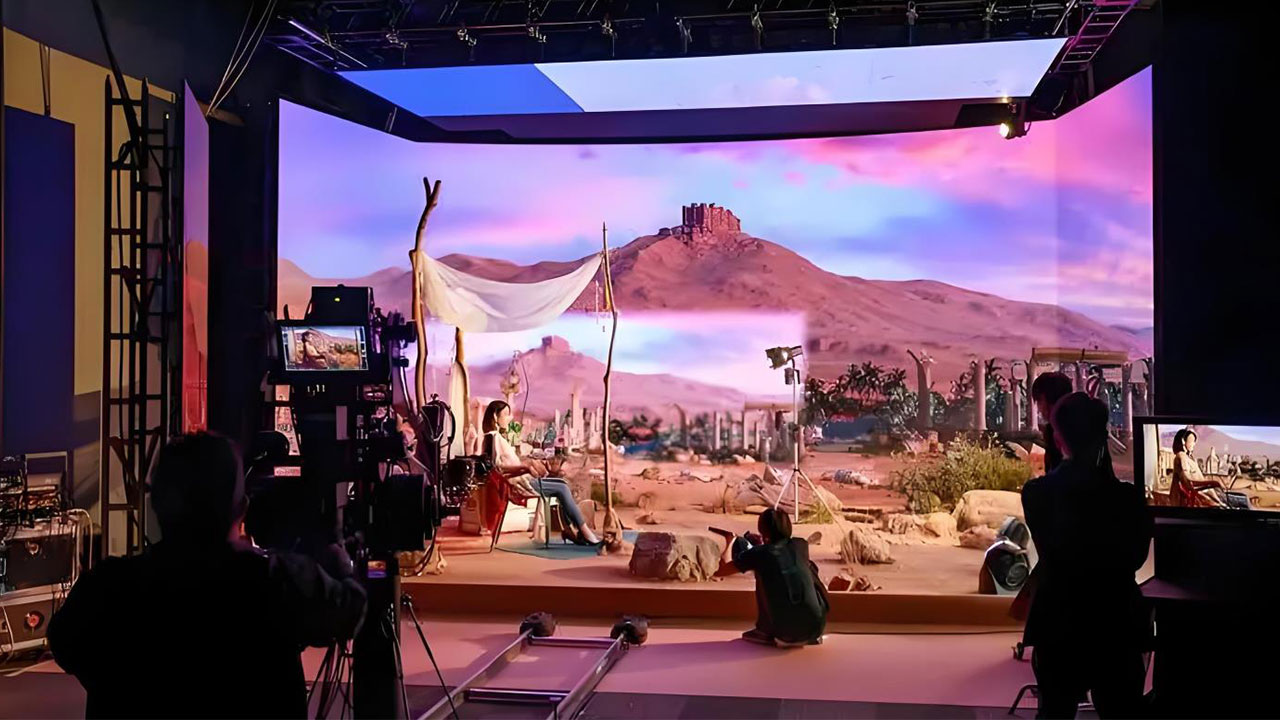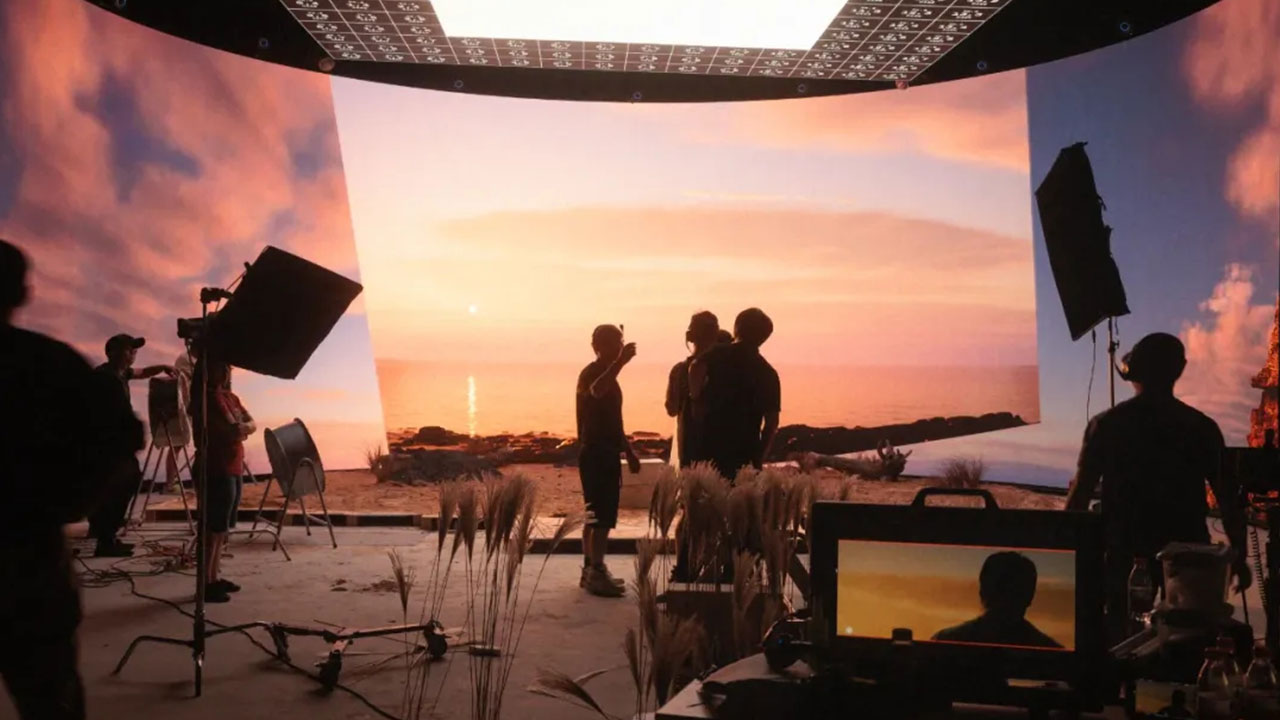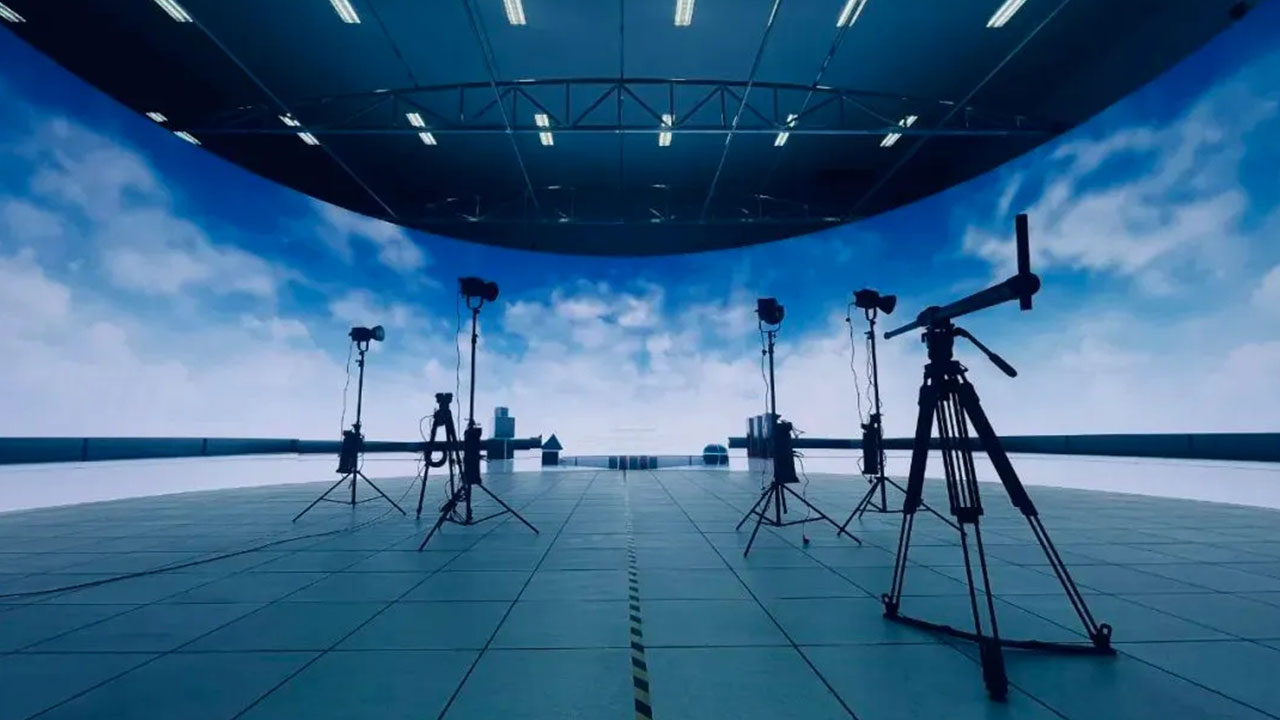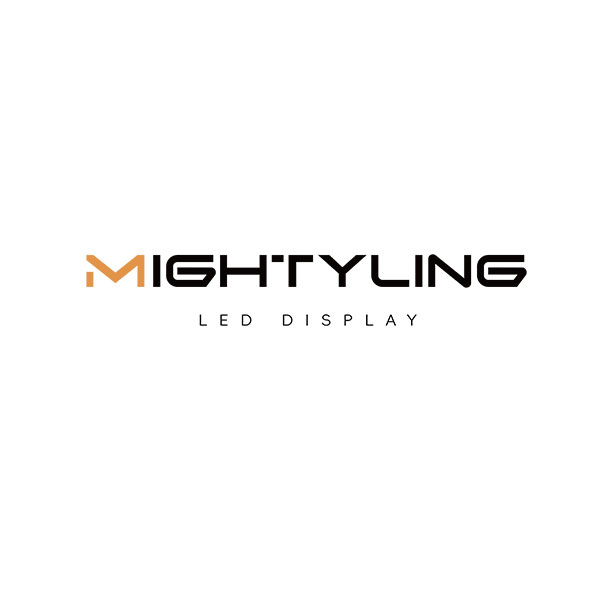+86 0755 2301 1202
info@mightyling.com
Building 1, Zhongzhan Technology Park, No. 9 Furong Road, Tantou Community, Songgang Street, Shenzhen
LED virtual shooting is reshaping the underlying logic of image production, completing a magnificent transformation from an industry disruptor to the infrastructure of the film and television industry. The core of this technological change is the transformation of LED screens from a "luxury" to a "standard configuration". Data shows that by the end of 2024, the number of domestic LED virtual studios will exceed 40, forming a large-scale coverage in major film and television cities such as Beijing, Shanghai, and Hengdian, witnessing the process of this technology moving from high-end fields to popular applications.

1.Technological breakthroughs: from “out of reach” to “within reach”
Early LED screens were limited by pixel density and brightness and could not meet the requirements of film-level image quality. In 2019, the pixel pitch of mainstream LED screens was mostly above P2.5, with a resolution of only 1080P, and there were serious moiré and reflection problems. However, with the maturity of COB technology, the average price of ultra-fine pitch LED screens below P1.2 will drop to 20,000-35,000 yuan/square meter in 2023, a decrease of 45%, and the pixel density will increase by more than 3 times, achieving 8K resolution and 2000nit peak brightness.
The core of virtual shooting is "what you see is what you get". In 2022, the Nanite virtual geometry technology launched by Unreal Engine 5 enables the LED screen background to render 1 billion polygon scenes in real time with a delay of less than 1 millisecond. In conjunction with the Free-D protocol of the Sony FR7 camera, real-time synchronization of camera motion data can be achieved without additional hardware, greatly reducing the technical threshold. The algorithm developed by Alibaba Entertainment has shortened the calibration time from 30 hours to 20 minutes, ensuring the seamless integration of virtual and real images. Traditional green screen shooting relies on post-production dimming, while LED screens can achieve 14-speed dynamic range and 10-bit color depth through HDR technology, simulating real lighting effects in real time. For example, in "The Mandalorian", the dynamic light and shadow changes of the LED screen background directly affect the reflection of the actors' costumes and facial shadows, making the performance more natural and realistic. This "light moves with the scene" feature has completely changed the logic of traditional film and television lighting.

2. Cost reconstruction: from "money-burning game" to "cost-effective choice"
In 2019, a 200-square-meter virtual shooting LED screen system (including rendering server) cost more than 20 million yuan, which was only affordable for top Hollywood crews. But by 2024, with the popularization of COB and MIP technologies, the cost of a system of the same size will drop to less than 5 million yuan, a drop of more than 70%.
Virtual shooting brings post-production forward, greatly shortening the production cycle. The efficiency of a certain TV series using virtual shooting increased by 30%, the number of on-site staff was reduced by 1/3, and the production cost of a single episode was reduced by about 1.5 million yuan. Traditional green screen shooting requires 2-3 months of post-production synthesis, while virtual shooting can complete 80% of the picture effects in only 1-2 weeks. This efficiency advantage allows small and medium-cost projects to enjoy the treatment of top-level production. Virtual shooting reduces the loss of real-scene construction and off-site shooting. If the "Heavenly Palace" in a certain TV series is built with traditional scenery, it will consume 500 cubic meters of wood and 1 month of construction time, while virtual shooting only uses two physical pillars and 2 tons of environmentally friendly artificial snow, saving more than 500,000 yuan in costs. In addition, the reusability of LED screens allows the digital asset library to continue to accumulate, further reducing long-term costs.

3. Application expansion: from "movie-only" to "full-scenario penetration"
From the interstellar battlefield of "The Mandalorian" to the Song Dynasty market in "The Code of Along the River During the Qingming Festival", LED screens have covered all categories such as movies, TV series, and online dramas. In 2024, more than 40 virtual studios were established in China, and many Oscar-winning films used this technology. What is more noteworthy is that virtual shooting is penetrating from science fiction and fantasy to realistic themes. For example, "Flowers" restored the street scenes of Shanghai in the 1990s through LED screens, realizing the visual spectacle of "time travel".
In the advertising field, traditional location shooting is gradually shifting to LED virtual shooting. Car ads use LED screens to simulate the northern lights, and the production cost of a single piece has dropped from 2 million yuan to 800,000 yuan; Douyin local life service providers use virtual live broadcast technology to provide brands with "all-in-one" solutions, and 50 leading brands have achieved marketing innovation. The live broadcast industry has also benefited, with virtual anchors using LED backgrounds to achieve an immersive experience of "one shot to the end", and the conversion rate of a single show has increased by 40%.
4. Policy-driven: From a spark to a raging fire
In May 2024, the National Development and Reform Commission and six other departments jointly issued the "Implementation Plan for Promoting Equipment Updates in the Cultural and Tourism Fields", which clearly proposed "large-scale implementation of the cinema LED screen projection system update plan" and provided a maximum of 30% equipment purchase subsidy. Driven by the policy, more than 60 new LED movie screens will be added in China in 2024, and another 28 will be added in the first quarter of 2025, covering more than 30 cities across the country. This "policy + market" dual-wheel drive has accelerated the popularization of technology.
Shenzhen, Hangzhou, Hengdian and other film and television industry clusters have introduced special policies. For example, Shenzhen provides 20% financial support for the purchase of virtual shooting equipment and sets up a 1 billion yuan industry fund; Hengdian Film and Television City invests 500 million yuan to build 10 LED virtual studios, with a rental subsidy of 50%. These measures not only reduce corporate costs, but also form an industrial cluster effect, attracting upstream and downstream companies to accelerate agglomeration.
From the use of rotating models to create a sense of weightlessness in "2001: A Space Odyssey" to the virtual universe built by LED screens today, every technological leap in LED virtual photography repeats the same script: new technologies always debut as luxury goods first, and then quietly change the rules as infrastructure. When LED screens complete the transformation from "stunning tools" to "creative partners", perhaps we will usher in not only an innovation in the way of shooting, but also a cognitive revolution in the essence of images.
Technology | Features of flexible LED display
Technology empowers stage art: How LED stage rental screens reconstruct a new paradigm of audio-visual experience

Mengling is a global provider of LED displays. We show premium technology with cutting-edge technology and advanced innovations, providing LED display products, solutions,and services worldwide for rental stage events, ads billboards, commercial display, etc.
Building 1, Zhongzhan Technology Park, No. 9 Furong Road, Tantou Community, Songgang Street, Shenzhen

Cell:+86 193 2872 5381
Whatsup:+86 176 6528 8667
E-mail:info@mightyling.com
Headquarters Address:
No. 1 Factory Building 101, Phase Ⅱ of Jinshunyuan factory area, south side of Furong Road, Tantou community, Songgang Street, Bao'an District, Shenzhen, China
Factory Address:
No. 1 Factory Building 101, Phase Ⅱ of Jinshunyuan factory area, south side of Furong Road, Tantou community, Songgang Street, Bao'an District, Shenzhen, China